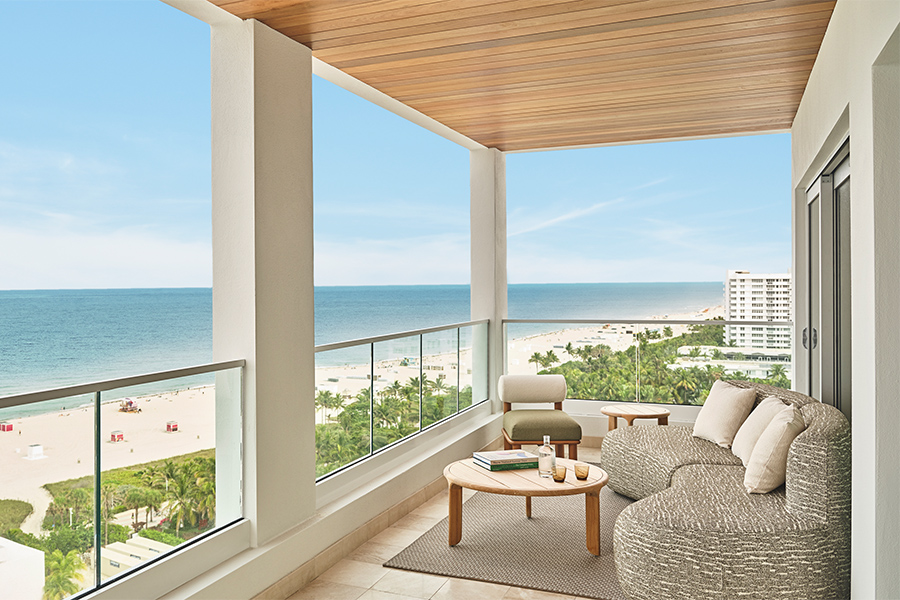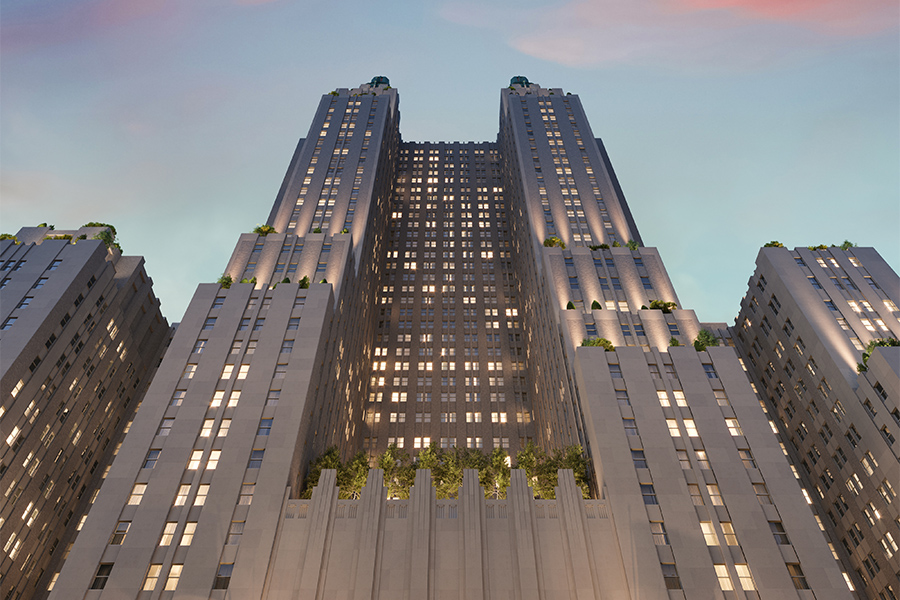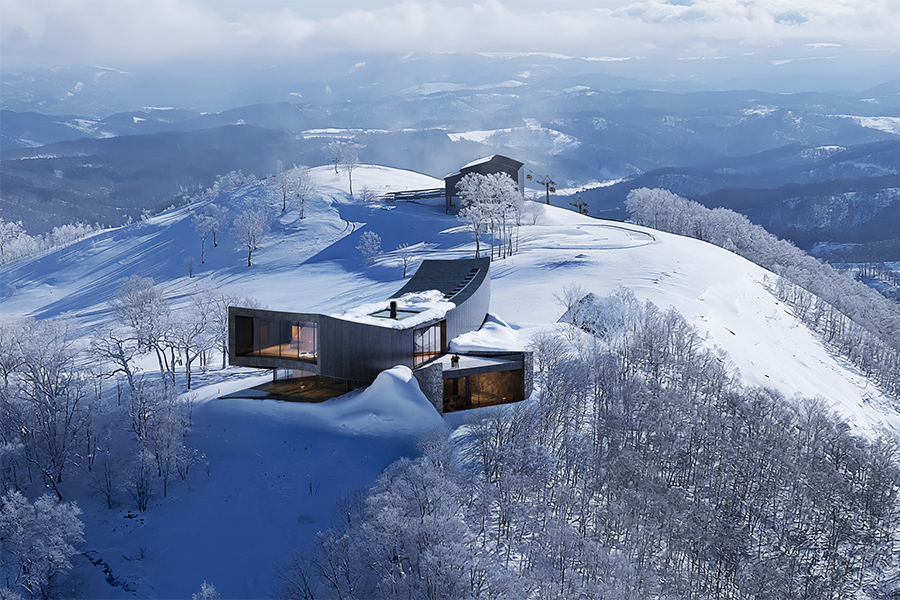Originally opened in 1941 and designed by Igor Polevitzky and Thomas Triplett Russell, the Shelborne Hotel embodied Miami’s Art Deco elegancy. An early example of Miami Modern architecture, the structure was among the tallest of its day, helping to usher in the post-Depression boom in full-service resorts. In the 1950s, the hotel was updated by architect Morris Lapidus, who added the pool, cabanas, and additional guestrooms while still honoring the original design.
Today, after a $100 million renovation, the Shelborne by Proper ushers the landmark property into its new era while also celebrating the launch of the hotel company’s By Proper collection, which offers individually rooted properties that blend local character with elevated service and design.
For the Shelborne, Marta Tuneu and Aaron David Clarke, founders of Barcelona- and London-based ADC & Tuneu, paid homage to the storied hotel’s rich heritage while incorporating tropical influences, organic curves, and warm wood and marble accents.
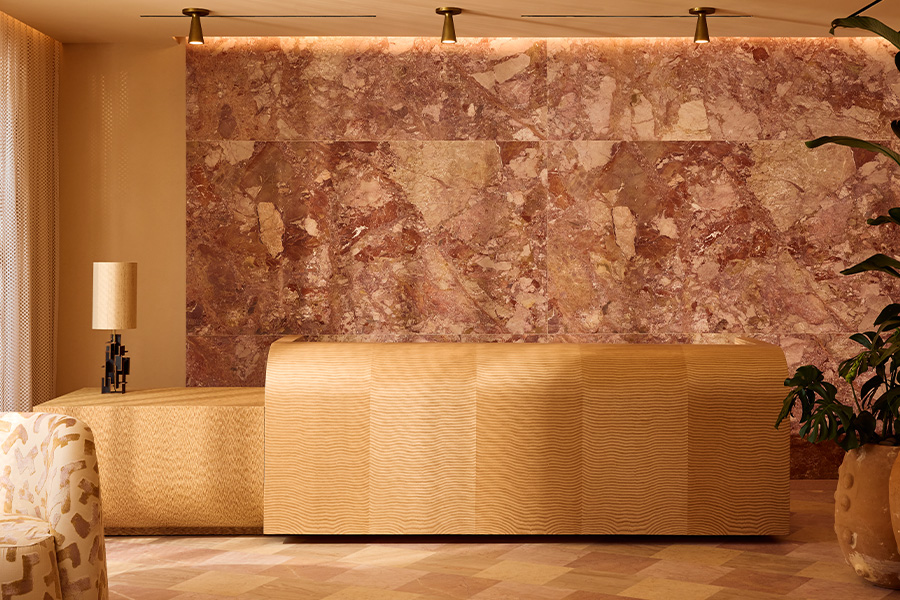
Yet, there were challenges. The Miami Design Preservation League’s strict oversight meant much of the exterior remains intact. Inside, original elements—like the red marble behind the reception desk, the “S”-monogrammed elevators, and the fanning Deco staircase at the lobby bar—were retained. “We always try to preserve as much as possible,” says Tuneu. “If we can’t preserve it, we try to recall it with our designs.”
From there, the team layered in a narrative that fuses South Beach’s signature Art Deco influence with Miami postmodernism, laced with cinematic references from Scarface and Miami Vice. “Nobody was really embracing that period of Miami—that glamorous 1960s and ’70s vibe,” Clarke says. The references are found in the pastel patterned sofas to the glass bricks that let light into Little Torch, the hotel’s hidden cocktail lounge. Flagship restaurant, Pauline, meanwhile, boasts vibrant tilework and lush greenery.
The lobby sets the tone with marble installed in an artful checkerboard pattern, part of a painstaking approach that saw the hotel’s major stone surfaces laid out offsite to ensure perfect alignment before being reassembled at the hotel. Two seating vignettes anchor the entrance, with armchairs in fabrics that echo Miami’s breezy landscape and rugs custom-woven to evoke the city’s sunrises in a 3D gradient.
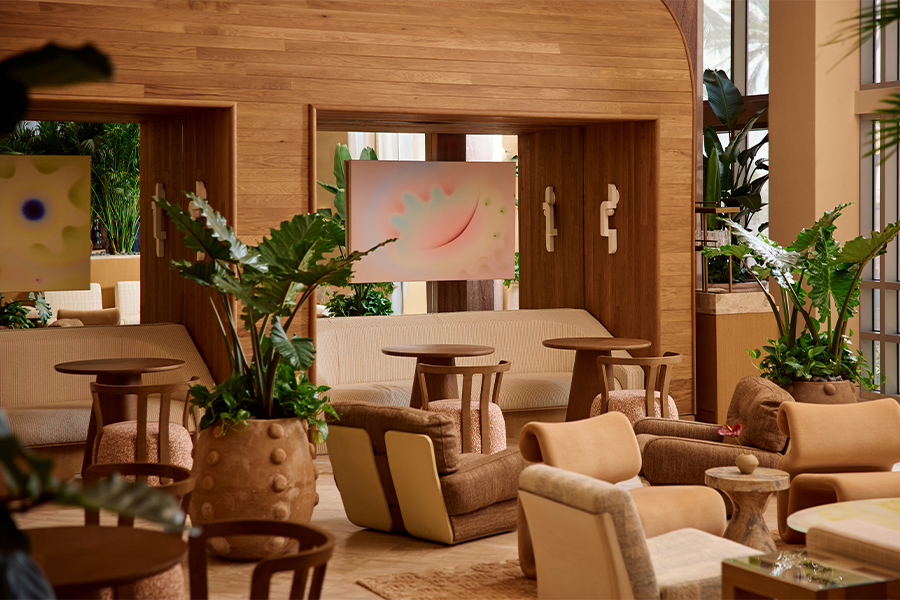
Art plays an equally important role. At the main entrance, a curved wall holds a hand-dyed silk installation by Kenny Nguyen, while Miami-based artist Regina Jestrow’s patchwork fabric pieces reference the city’s neon and textile heritage nearby.
A standout of the hotel is the grand 4,000-square-foot lobby bar, centered on a bespoke Ceppo Beige stone bar. Upon it, a life-size sculptural vase adds an alluring organic form, while seating mixes upholstered stools, vintage armchairs, and Brutalist sofas in a Chanel-esque weave. “Proper likes to have signature moments when it comes to furniture,” says Clarke. Many pieces were built from reclaimed marble slabs found in an abandoned Spanish quarry. “No two are alike,” Clarke adds. “They have their own personalities.”
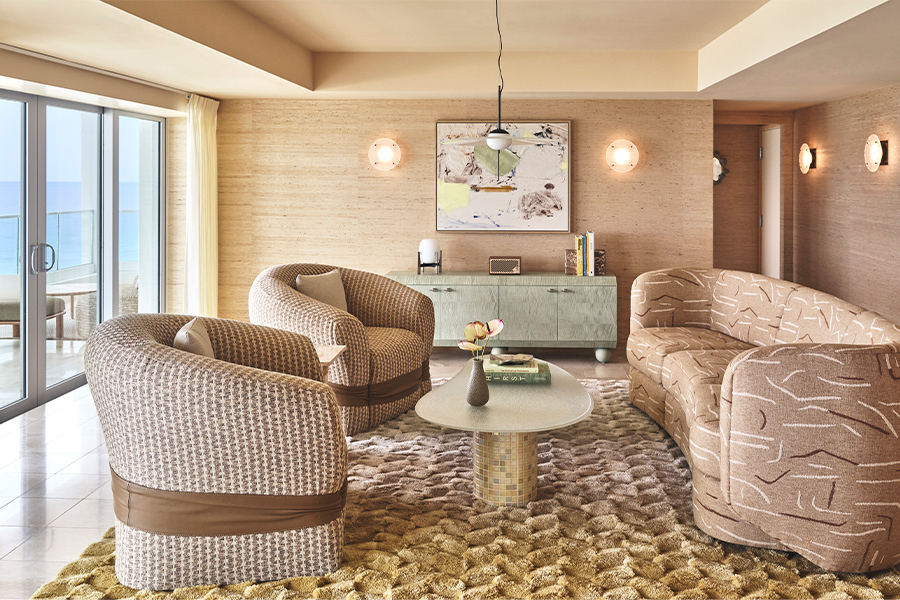
The 251 guestrooms continue the tactile story with oak closet doors and playful cylindrical handles, raffia-like wallpaper, distressed houndstooth sofas, and checkerboard stone floors, The Oceanview penthouse further leans into the hotel’s retreat-like ethos: a vintage sofa in light blue and white fabric recalls South Beach signage; Nathalie Basoski’s seascape art mirrors the wall-to-wall sea view beyond the window; and a white floor lamp adds a subtle ’70s-era retro note. Outside, a two-suite terrace offers multiple seating nooks and loungers facing the Atlantic. From pastel gradients to bespoke textiles, “[we chose] a mix that doesn’t date quickly,” says Tuneu.
The result is a property that honors its history while feeling firmly of the moment, ushering in a new chapter for the stretch of South Beach now dubbed Billionaire’s Beach, where high-profile arrivals from Auberge, Rosewood, and the soon-to-reopen Delano will reshape the shoreline over the next few years, rebranding the stretch on Collins Avenue from high-octane party hotspot to a high society enclave.
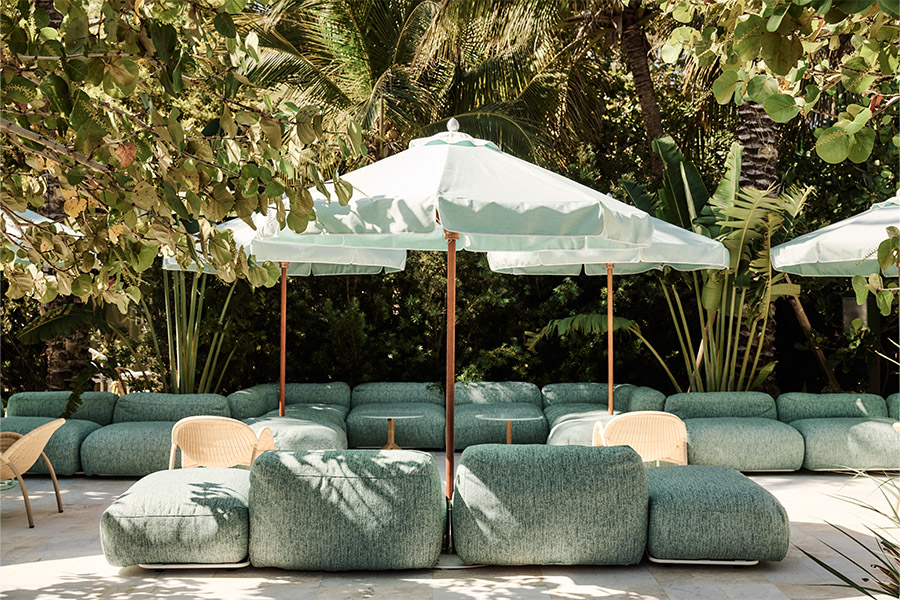
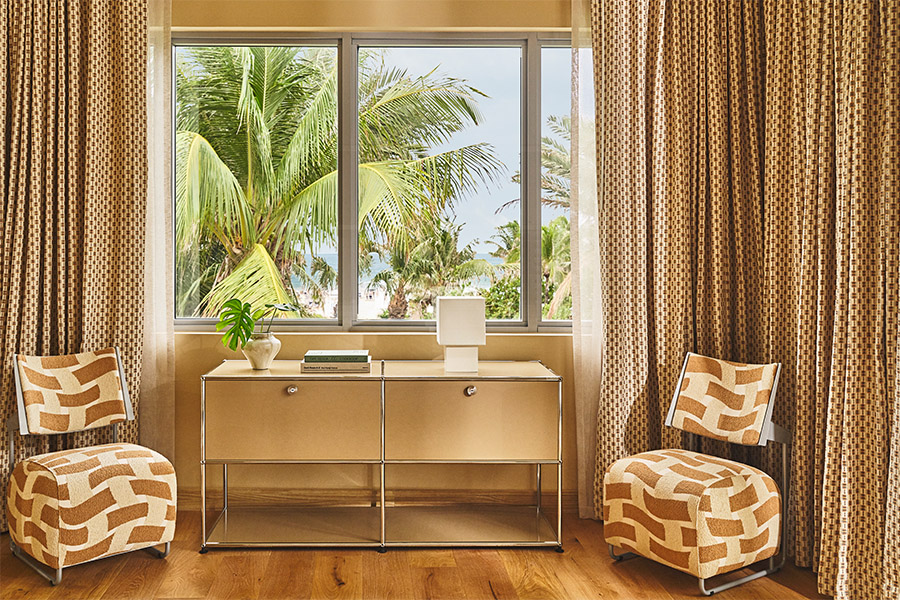
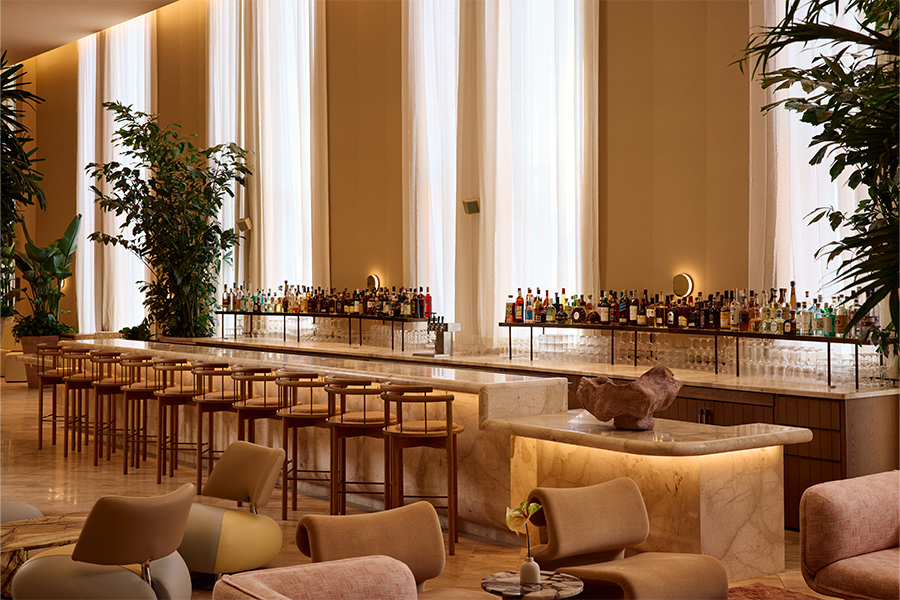
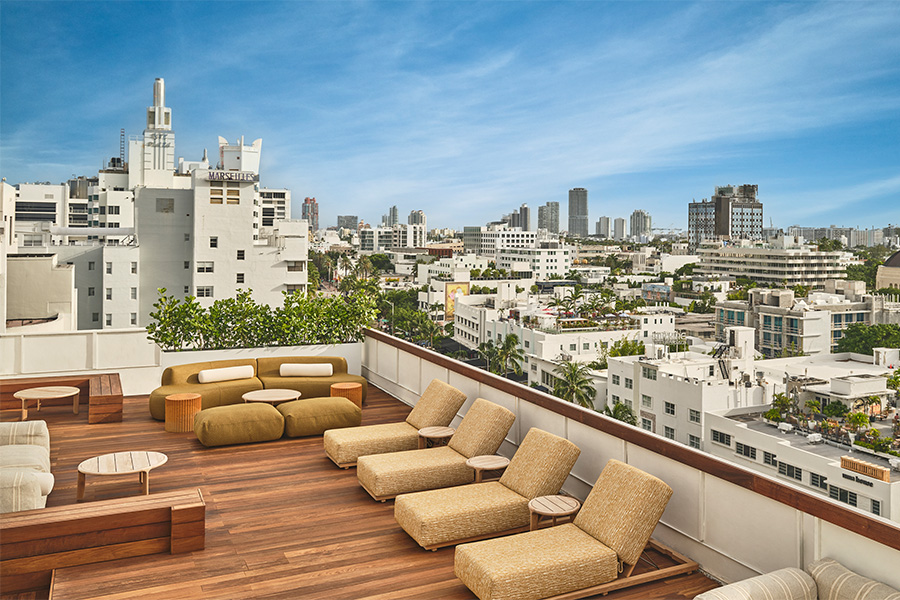
More from HD:
Designers Took the Lead—and the Deed—on These Hotels
On Trend: Six Candy-Colored Products
Dr. Upali Nanda Focuses on the Human Experience

